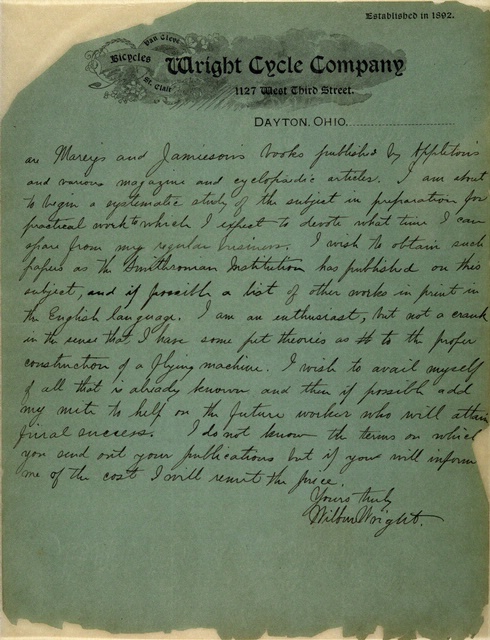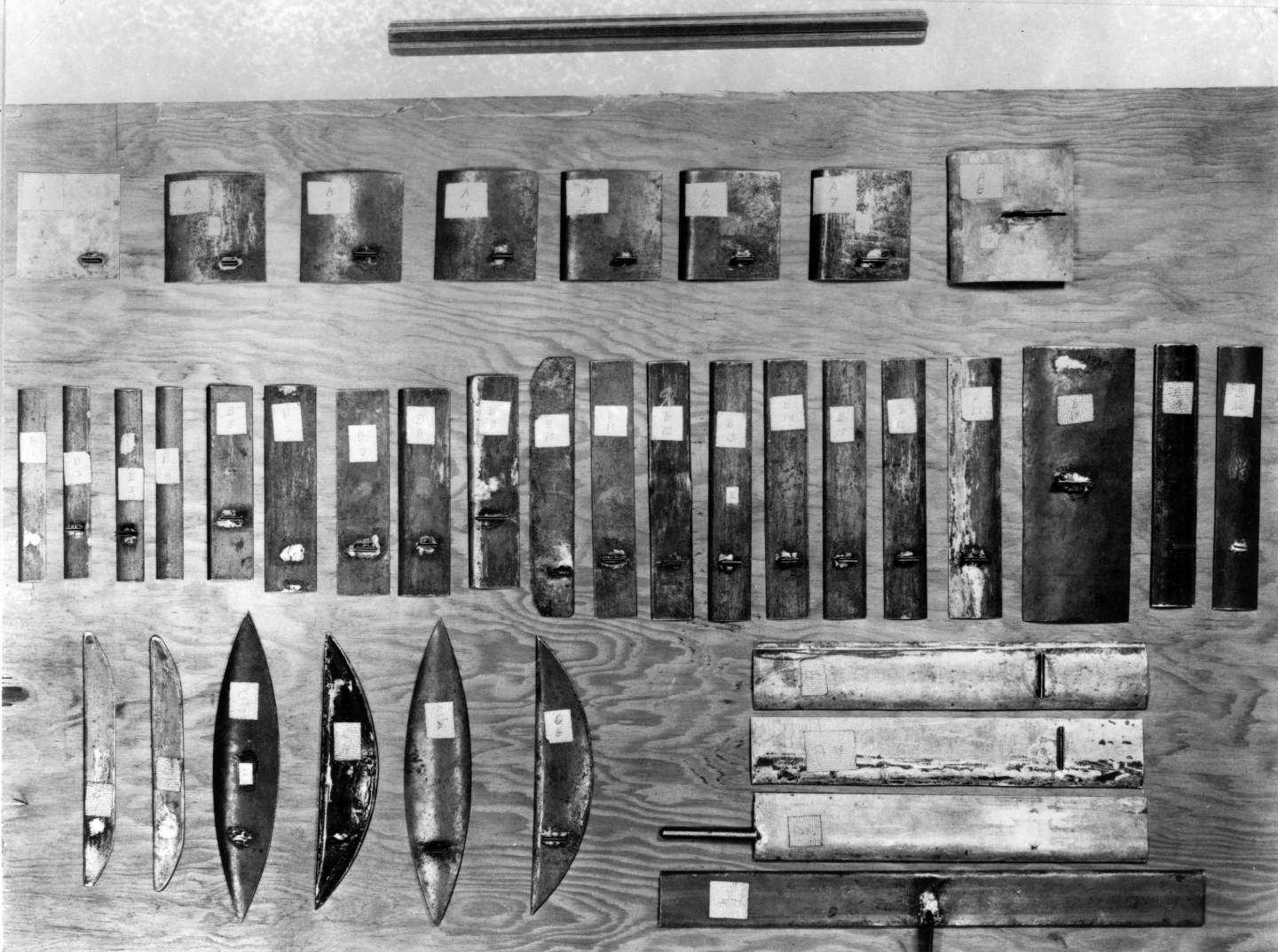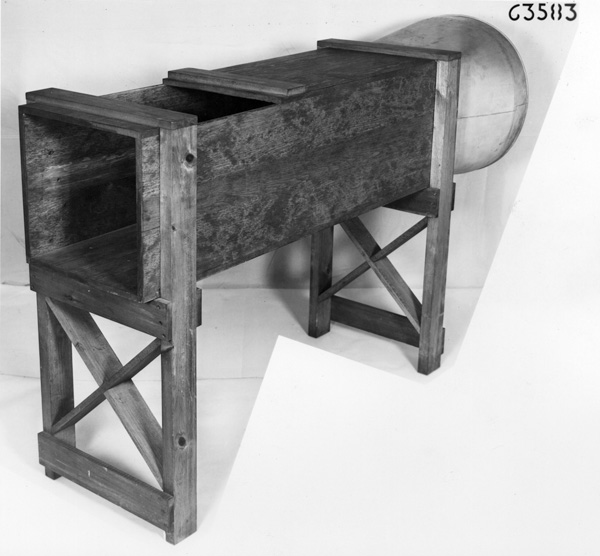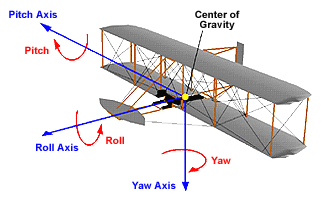
Research and Hypothesizing
"We knew that the Smithsonian Institution had been interested in some work on the problem of flight and, accordingly, on the 30th of May 1899, my brother Wilbur wrote a letter to the Smithsonian inquiring about publications on the subject."
~ Wilbur Wright


"Letter to the Smithsonian." 1899. Smithsonian Institution.
"Dear Sirs:
I have been interested in the problem of mechanical and human flight ever since as a boy I constructed a number of bats after the style of Cayley's and Penaud's machines. My observations since have only convinced me more firmly that human flight is possible and practicable... I wish to avail myself of all that is already known and then if possible add my might to help the future worker who will attain final success..."
~ Wilbur Wright
The works and experimentations of Cayley, among others, greatly contributed to the Wrights’ success. Through research, the brothers reasoned that the mystery of flight lied in wing shape, power and propulsion, and controlling the plane's motion.
Conducting Experiements
The Wright brothers built a wind tunnel and model wings to test wing behavior in a flight environment. Through this, they calculated the minimum wing size necessary for lift, the power their engine would need to produce, and evaluated propeller performance.

"Wright Wind Tunnel Test Wing Shapes." Smithsonian Institution.

"Henry Ford's Reproduction of the Wright's 1901 Wind Tunnel." 1919. Courtesy of Special Collections and Archives, Wright State University.




